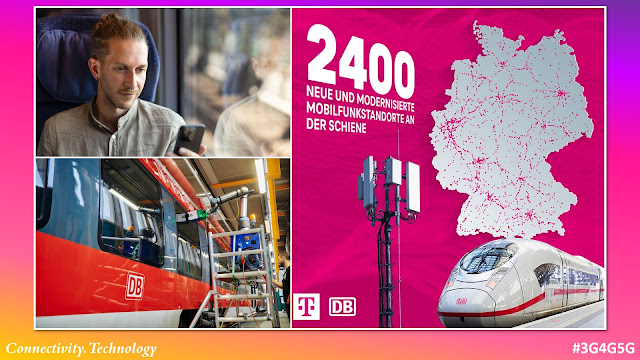Rail passengers today take uninterrupted mobile and data connections for granted as much as a smooth journey. Meeting these expectations demands close collaboration between train operators and mobile network providers to deliver consistent coverage along thousands of kilometres of track. Deutsche Bahn’s comprehensive approach to connectivity weaves together network expansion, onboard innovations and the latest digital standards to ensure passengers stay connected from station to station.
Since 2021 Deutsche Bahn has been working with Deutsche Telekom to blanket its main lines with high-performance mobile coverage. By supplying speeds of more than 200 Mbit/s on nearly all key routes the partnership reached its original targets two years ahead of schedule. Today passengers enjoy at least 200 Mbit/s on 99 per cent of the 7 800 kilometres of main lines and even 300 Mbit/s or more on 95 per cent. Secondary lines also saw a transformation. Coverage of 100 Mbit/s rose from under 83 per cent to over 96 per cent in just three years. This progress springs from more than five hundred new masts and almost two thousand upgraded sites that close former dead zones along the tracks.
Yet coverage is only half the story. Mobile signals must penetrate each carriage’s interior if passengers are to make calls or stream without interruption. Many modern trains are fitted with factory-installed windows engineered for signal permeability. Existing rolling stock has benefitted from a pioneering laser process that etches a fine pattern into the wafer-thin metallic coating of window panes. This mesh structure boosts signal entry roughly one hundredfold while preserving thermal insulation and passenger comfort. Already deployed on regional trains in Bavaria and in Berlin and Brandenburg, this laser-modification will cover seventy thousand panes across more than three thousand coaches by mid-2026, representing some fifty million euros of investment.
As data appetite grows rail operators are preparing for the next leap in mobile communications. The Future Railway Mobile Communication System will migrate from the legacy GSM-R standard to a 5G-based network capable of gigabit speeds. Under the Gigabit Innovation Track project tests on a ten-kilometre route are exploring how to achieve these high transmission rates and establish infrastructure with minimal environmental impact. In parallel pilots of dedicated 5G campus networks at maintenance depots in Krefeld and Cottbus demonstrate how trackside and onsite operations can harness reliable high bandwidth for diagnostics, remote support and efficient asset management.
Beyond technical innovation the Hamburg–Berlin corridor has become a showcase for technology-neutral cooperation. Mobile operators including Deutsche Telekom, Vodafone and Telefónica have joined Deutsche Bahn and federal authorities to share new radio masts built during the line’s renovation. This partnership lays the groundwork for seamless gigabit coverage on one of Germany’s busiest intercity routes by spring 2026. Trials will examine how best to align trackside infrastructure, on-board permeability and spectrum usage to sustain the highest quality service under the Future Railway Mobile Communication System.
Such cooperation extends to nature reserves and tunnels where roll-out requires special permissions and safety precautions. After lengthy discussions coverage through the Müritz National Park on the Berlin–Rostock line is slated for completion by 2026. Tunnels present another challenge since installation can only occur during full closures. Already four hundred tunnels have received mobile technology with over a hundred upgraded for high-speed rail routes. Continued efforts will ensure that even the most demanding stretches of the network offer passengers reliable connectivity.
The convergence of network expansion, window permeability and next-generation standards points to a future where rail travel is defined not only by speed and sustainability but also by seamless digital experience. Whether making video calls, streaming entertainment or collaborating on the move passengers can expect the same quality of mobile service on board as they enjoy at home or in the office. In this way Deutsche Bahn and its partners are turning trains into rolling hubs of connectivity, bridging the gap between rail and the digital world.
Related Posts:
- Connectivity Technology Blog: 'Gigabit Innovation Track' (GINT) Gets Green Light in Germany
- Connectivity Technology Blog: Deutsche Bahn to get Seamless Mobile Network Along all Tracks
- Connectivity Technology Blog: Future Spectrum Demand for Rail Communications
- The 3G4G Blog: Future Railway Mobile Communication System (FRMCS)
- Telecoms Infrastructure Blog: London Underground Mobile Network Infrastructure
- Telecoms Infrastructure Blog: Bringing Connectivity to Underground Rail Network

Comments
Post a Comment